





























Airlines, Airports and Airliners News 25 to 31 July 2022
Google Banner Ad

BOOM SUPERSONIC REVEALS REFINED OVERTURE AND ANNOUNCES LANDMARK MARKET-EXPANDING ALLIANCE WITH NORTHROP GRUMMAN AND NEW TIER ONE SUPPLIERS

Boom Supersonic, the company building the world's fastest airliner, optimised for speed, safety, and sustainability, today presented the refined design of Overture and also announced a new partnering agreement with Northrop Grumman to develop special mission variants of the aircraft. Carrying 65-80 passengers at twice the speed of today's airliners and running on 100% sustainable aviation fuel (SAF), Overture will fly Mach 1.7 over water with a range of 4,250 nautical miles.
With this updated configuration, Boom combines a number of engineering innovations in aerodynamics, noise reduction, and overall performance.
Four-engine design: Overture will be powered by four powerful, wing-mounted engines that enable the airliner to cruise at Mach 1.7 over water and just under Mach 1 over land. Additionally, the four-engine design reduces noise while also decreasing costs for airline operators. Engine placement was selected to conform to the strictest passenger safety requirements.
Quieter operation: On take-off, Overture will use the world's first automated noise reduction system. The airliner will fly without afterburners, meeting the same strict regulatory noise levels as the latest subsonic airplanes. These noise reduction efforts will deliver a quieter experience both for passengers and airport communities.
Contoured fuselage: According to the principle of area-ruling, Overture's fuselage has a larger diameter toward the front of the aircraft and a smaller diameter toward the rear. Boom has applied this design technique to minimise drag and maximise fuel efficiency at supersonic speeds.
Gull wings: The aircraft's wings are sculpted to enhance supersonic performance as well as improve subsonic and transonic handling. Importantly, the wing shaping also helps ensure safety and stability at any speed.
Carbon composite construction: Overture will incorporate carbon composite materials into the majority of the build that are lighter, stronger, and more thermally stable than traditional metal construction. Carbon composites can also be manufactured with highly complex curvature, contributing to the aircraft's aerodynamic efficiency.
Net zero carbon: Overture has been developed from the beginning to be net zero carbon, flying on 100% SAF. Sustainability is woven into all aspects of Overture, from design and production to flight and end-of-life recycling.
OVERTURE SPECIFICATIONS:
Cruise speed: Mach 1.7 supersonic, Mach 0.94 subsonic
Range: 4,250nm with full payload
Passengers: 65-80
Exterior Dimensions: Length: 201 feet, Wingspan: 106 feet, Height: 36 feet
Interior Dimensions: 79 feet long, up to 6.5 feet height at aisle
Airframe: composite fuselage, wing, vertical, and horizontal
Wing: gull with digital leading and trailing edge flap control
Flight controls: 4x redundant digital fly-by-wire on 2 LRUs
Powerplant: 4x medium-bypass 100% SAF-compatible turbofan
Airport Community noise: ICAO Chapter 14 / FAA Stage 5
Additionally, the company announced that it will begin outfitting The Iron Bird, a new 70,000-square-foot hardware ground test facility in Centennial, Colorado to house its first full-scale Overture testing model and flight deck simulators. The test model, also called an iron bird, will be used for integrating Overture's flight hardware, software, and systems. Earlier this year, Boom announced its selection of the Piedmont Triad area for its first Overture Super factory and remains on track to begin production in 2024.
Google Block Ad

Boeing's [NYSE: BA] 2022 Pilot and Technician Outlook (PTO) forecasts demand for 2.1 million new aviation personnel over the next 20 years to safely support the recovery in commercial air travel and meet rising long-term growth.
The long-term forecast shows that 602,000 pilots, 610,000 maintenance technicians and 899,000 cabin crew members will be needed to support the global commercial fleet over the next two decades. The worldwide fleet is expected to nearly double and grow to 47,080 airplanes by 2041, according to Boeing's recently released Commercial Market Outlook.
This year's PTO represents a 3.4 percent increase from 2021, excluding the Russia region, which is not forecast in this year's PTO due to sanctions that prohibit exports of aircraft manufactured in western countries and market uncertainty. China, Europe and North America represent over half of the total new personnel demand. The fastest growing regions are Africa, Southeast Asia and South Asia, with all three regions expected to grow more than 4 percent over the forecast period.
"As the commercial aviation industry recovers from the pandemic and plans for long-term growth, we anticipate a steady and increasing demand for aviation personnel, as well as the ongoing need for highly effective training," said Chris Broom, vice president, Commercial Training Solutions, Boeing Global Services. "Our customer-centric approach and digital expertise includes a commitment to delivering data driven, competency-based training and assessment solutions as well as technologies that meet the evolving needs of our customers."
New digital solutions to enhance the efficacy and efficiency of training would include immersive learning experiences and virtual learning platforms.
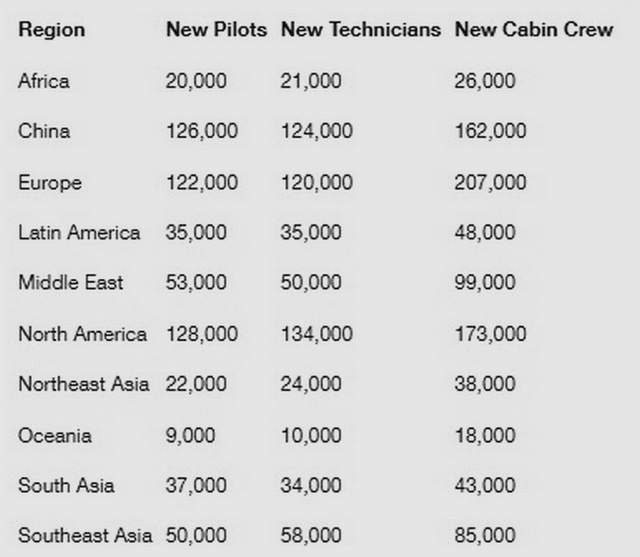
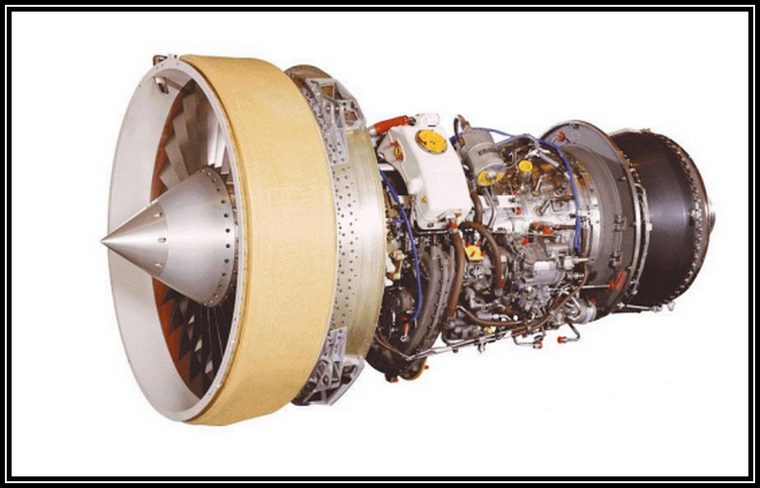
CemAir has ordered six new CF34-3B spare engines to power its fleet of Bombardier CRJ 100/200 LR aircraft. The Johannesburg-based company currently owns and operates a fleet of 12 CRJ 100/200 LR airliners.
"The CF34-3B has set industry standards for performance and reliability, " said Cristina Seda-Hoelle, General Manager, Regional and Business Aviation for GE. "We are honoured that CemAir has placed its confidence in us with this order."
Derived from the proven TF34 military engines, the CF34-1A entered service in 1983 powering the Canadair Challenger 601 business jet. The CF34-3B entered service in 1995, offering lower fuel consumption at cruise, a faster rate of climb, and shorter hot-day/high-altitude take-off performance.
"Our business continues to expand and add routes and this order for CF34 engines comes at the right time," said CemAir CEO, Miles van der Molen. "These highly-utilized engines offer reliability and fuel efficiency that meets our business objectives."
All CF34 engines, like all GE engines, can operate on approved sustainable aviation fuel blends today.
About GE
GE is a world-leading provider of jet and turboprop engines, components, integrated digital, avionics, electrical power and mechanical systems for commercial, military, business and general aviation aircraft.
Google Banner Ad
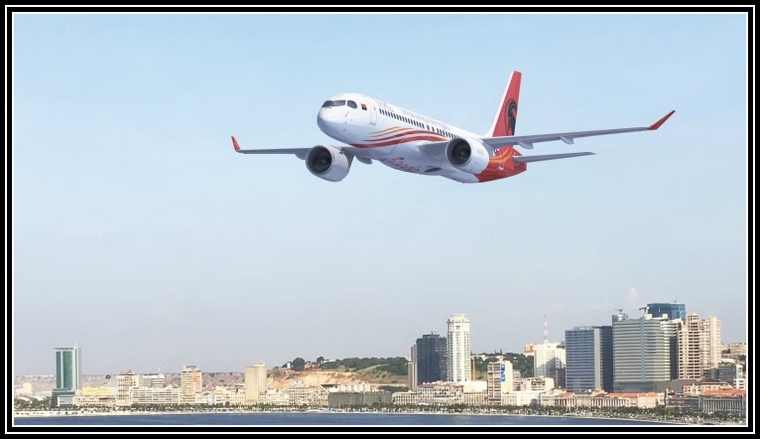
The Airbus A220-300 are state-of-the-art aircraft concerning efficiency and average fuel consumption. TAAG expects savings of around 30% in fuels - when compared to existing Boeing 737 models on long-haul routes - and a 20% reduction in operational cost globally.
TAAG and ALC partnership was signed during the Farnborough International Airshow 2022, a major event worldwide related to aviation. Thus, Airbus facilitated a symbolic ceremony with its exhibition stand as event venue.
"Today we start our relationship with ALC incorporating six new Airbus A-220-300 into our fleet. It's indeed a significant announcement for us as we are celebrating a new era and a new vision for TAAG. We are alive, back in business, breaching with the past to achieve greater results and becoming a reference for Africa. This partnership emphasises our commitment to grow and further improving our credibility among international stakeholders while creating a new value proposition for our passengers. "Eduardo Fairen, CEO TAAG.
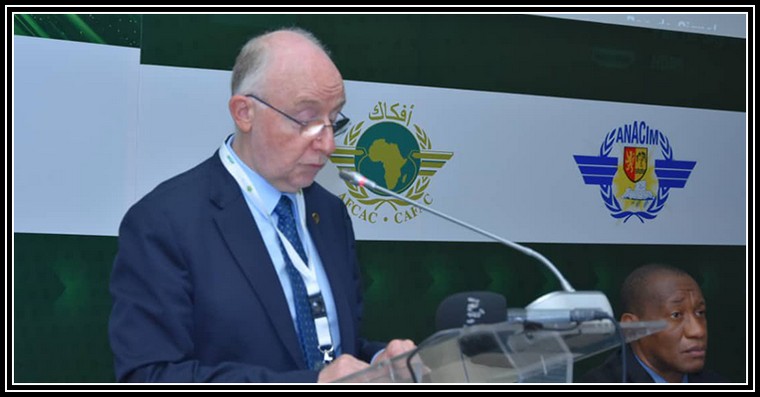
The President advocated for these objectives during the two-day 34th Extraordinary Plenary Session of the African Civil Aviation Commission (AFCAC), hosted in Senegal.
Opening remarks and goodwill messages were also delivered at this occasion by Mr. Mohamed Moussa, Director-General of the Agency for Aerial Navigation in Africa and Madagascar (ASECNA), Dr Amani Abu-Zeid, AU Commissioner for Infrastructure and Energy, and Mr. Silas Udahemuka, President of AFCAC and Mr. Sidy Gueye, Director-General of Civil Aviation of Senegal.
Emphasising the need to establish sufficient training capacities to adequately address Africa training needs, Mr. Sciacchitano highlighted that "with its enormous natural and human resources, and a blue-sky attitude towards the adoption of emerging aviation technologies, Africa is well positioned to contribute to global leadership as the next revolution in air transport takes shape."
The Council President's remarks served to highlight how Africa is currently poised to champion the development and production of sustainable aviation fuels (SAFs), which would directly support more sustainable aviation and goals of the ICAO Carbon Offsetting and Reduction Scheme for International Aviation (CORSIA).
In tandem, the African Union's Single African Air Transport Market (SAATM), which was established in support of the effective implementation of the Yamoussoukro Decision, holds the promise of "stimulating improved mobility, trade, tourism, and services, both within Africa and with the rest of the world", he said.
Mr. Sciacchitano also underscored the importance of capitalising on sustainable development opportunities at the national and regional levels, noting that air transport plays a unique and vital role as a development catalyst, and will play an essential role in achieving the goals of African Union's Agenda 2063, the United Nations 2030 Agenda for Sustainable Development, and of the African Continental Free Trade Area (AfCFTA).
ICAO is strongly committed to supporting progress towards these objectives, particularly through its No Country Left Behind (NCLB) initiative, and the ICAO Council President additionally pointed to the significance of the ICAO AFI Plan and AFI SECFAL Plan for safety and security respectively, and to the 2021 ICAO-AFCAC Project Implementation Agreement (PIA).
During his mission to Senegal, the President held a bilateral meeting with Mr. Alioune Sarr, Minister of Tourism and Air Transport of Senegal, which was attended by ICAO's Regional Directors of Western and Central Africa (WACAF) and Eastern and Southern Africa (ESAF), Mr. Proper Zo'o-Minto'o and Mr. Barry Kashambo, respectively. The President expressed ICAO's gratitude for Senegal's contributions towards ICAO's objectives regionally and globally, including through its hosting of ICAO's WACAF Regional Office. He also visited the new United Nations complex currently being constructed by Senegal, where ICAO's WACAF team will eventually reside.
Google Banner Ad
MINISTERS CONVENE AT ICAO TO EXPLORE GLOBAL AVIATION EMISSIONS REDUCTION OBJECTIVES TO COMBAT CLIMATE CHANGE

Ministers and officials from 119 countries convened at ICAO Headquarters on Tuesday for an important four-day round of high-level discussions and briefings toward a new collective global long-term reduction goal for international aviation CO2 emissions.
The result of that work is an important new report from the ICAO Committee on Aviation Environmental Protection, on the feasibility of a global long-term aspirational goal (LTAG) for international civil aviation CO2 emission reductions, outlining three integrated aviation in-sector scenarios. The report will be serving as a cornerstone for States' aviation emissions reduction discussions this week, and closely informing the recommendations they establish for Assembly States.
"This high-level meeting can demonstrate our collective determination to build a sustainable future for international aviation," underscored ICAO Council President Salvatore Sciacchitano in his opening remarks, which were followed by a keynote by Dr. Bertrand Piccard, Initiator and Chairman of the Solar Impulse Foundation.
President Sciacchitano also called for an expression of strong political will on the part of States to work together with each other and industry through ICAO, and to deliver outcomes for an ambitious new global long-term aviation emissions reduction goal.
As part of the extensive lead-up to the high-level environmental engagements this week in Montreal, ICAO has been pursuing environmental outreach and capacity building with States through a series of Global Aviation Dialogues over 2021 and 2022.
The UN agency has also been hosting an annual series of environmental innovation stocktaking events, featuring presentations on latest environmental technologies and research efforts so that countries can better consider how proposed solutions can support the long-term decarbonisation of international air transport.
The latest stocktaking engagement concluded on the eve of the high-level meeting, and had included inspirational remarks from ICAO Secretary General Juan Carlos Salazar, Farnborough International CEO Gareth Rogers, and the Co-Founder of the Sustainable Aviation Youth Foundation, Dirsha Bohra.
ICAO also recently launched its 'ACT-SAF' Assistance, Capacity-building and Training programme for Sustainable Aviation Fuel, in its effort to help generate more partnerships and co-operation in this area among States, industry, and related stakeholders.
Participants to the ICAO High-level Meeting on the Feasibility of a Global Long-term Aspirational Goal for International Aviation CO2 Emissions Reductions elected The Honourable Bishop Juan Edghill, Minister of Public Works of Guyana, as Chairperson for the event, as well as first and second Vice-Chairpersons Ms. Aishath Nahula, Minister of Transport and Civil Aviation of Maldives, and Ms. Charity Musila, the Alternate Representative of Kenya to ICAO.
In concluding his opening statement, President Sciacchitano emphasised that "the international aviation sector needs to seize this opportunity for responsible action now, and an ambitious global long-term aspirational goal will empower ICAO and its Member States together with air transport stakeholders to be part of the global solution in addressing climate change."
Google Block Ad
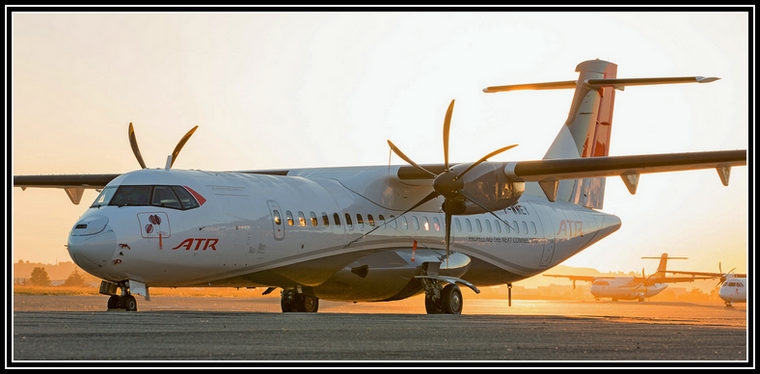
Afrijet CEO, Marc Gaffajoli, says: "Regional connectivity has a significant impact on local economies and community integration. To be effective in Africa an aircraft has to be cost-efficient, reliable and versatile. Moreover, the unique terrain in which Afrijet operates, comprising of the Congo rainforest - the world's second largest tropical forest after the Amazon - makes an even stronger reason to select the most responsible aircraft on the market for such essential connections."
Fabrice Vautier, ATR Senior Vice President Commercial, says: "Most traffic in Africa is concentrated on a few well served routes and there is a real need to connect secondary cities. Afrijet is able to do just that, providing a reliable and comfortable service to local communities. Accelerating the transition of its fleet to purchase the latest generation of ATR aircraft, is a clear demonstration of Afrijet's strong business strategy and commitment to sustainable aviation".
CHINA'S COMAC'S C919 COMPLETES TEST TASKS, EDGES CLOSER TO CERTIFICATION.
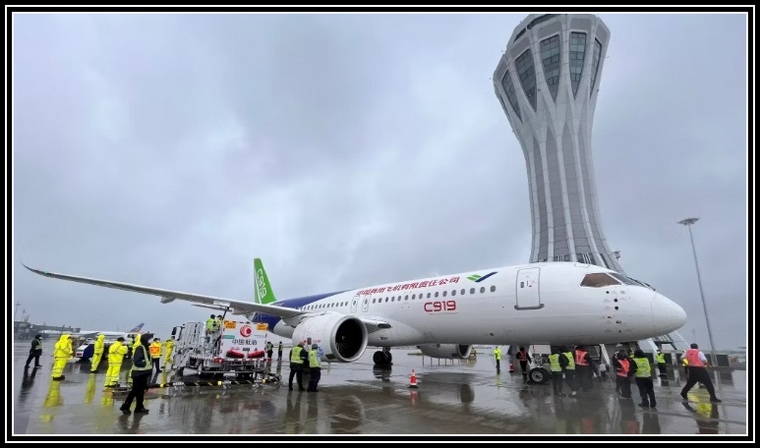
China's COMAC, announced that all the C919 test flights before certification are completed, bringing the C919 closer to Type Certification. The first C919 for the initial customer, China Eastern, has already taken its maiden flight last May.
All six protypes were assembled at the event held Weinan Airport in Shaanxi Province during which the announcement was made. The company announced that certification is scheduled for November of this year.
It is required by the CAAC airworthiness certification requirements that 300 hours of Functional and Reliability testing is mandated before the certification. Within these 300 hours,150 flight hours can be carried out in combination with other certification flight test tasks, and the remaining 150 flight hours need to be carried out through independent operations.
Google Banner Ad
AIRBUS INVESTS IN WORLD'S LARGEST CLEAN HYDROGEN INFRASTRUCTURE FUND MANAGED BY HY24
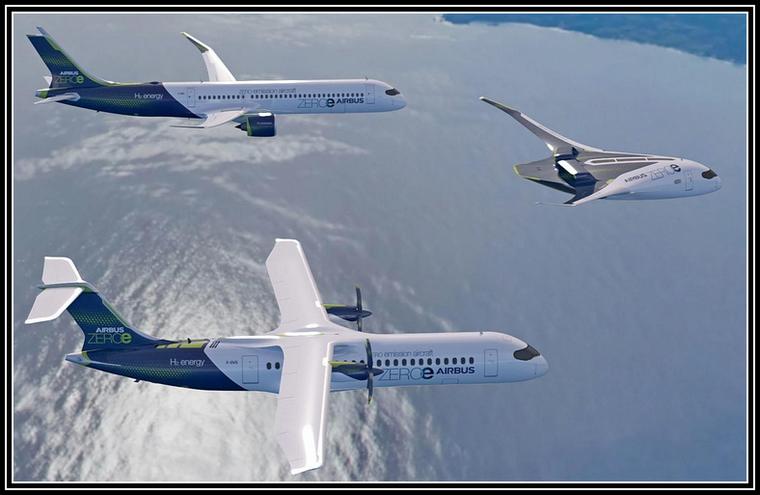
Airbus has joined the world's largest clean hydrogen infrastructure investment fund, managed by Hy24 - a joint venture between Ardian, a world-leading private investment house and FiveTHydrogen, an investment manager specialising in clean hydrogen investments.
"Since 2020, Airbus has partnered with numerous airlines, airports, energy providers and industry partners to develop a stepped approach to global hydrogen availability," said Karine Guenan, VP ZEROe Ecosystem, Airbus. "Joining a fund of this magnitude demonstrates Airbus' continuously active role in infrastructure investments for the production, storage and distribution of clean hydrogen worldwide."
"We are delighted that Airbus has joined the fund along with other key industrial and financial investors," said Pierre-Etienne Franc, the CEO of Hy24. "Hy24 is well-positioned to identify and accelerate the development of clean-hydrogen infrastructure companies to meet today's needs and ensure tomorrow's transportation and logistics."
As the aviation industry transitions to meet its net-zero carbon emissions goal by 2050, a significant number of requirements need to be met. Investing in such funds offers complimentary access to direct partnerships shaping the new energy ecosystems.
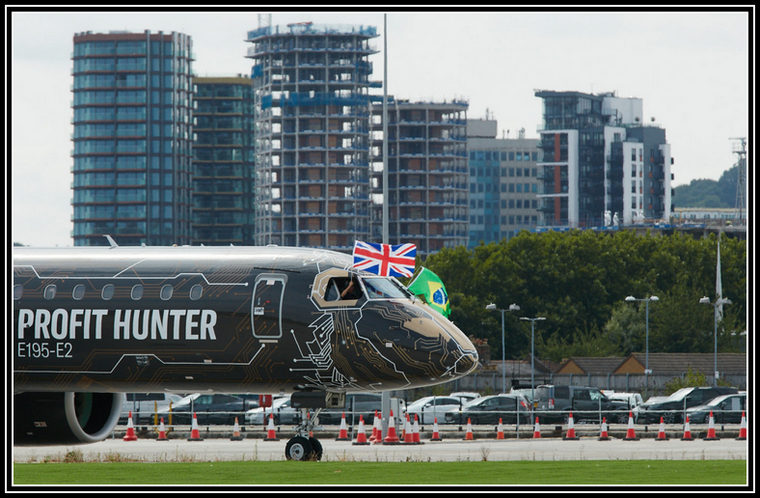
After departing the Farnborough Airshow, Embraer's latest aircraft, the E195-E2, made its debut landing at London's iconic City Airport (LCY); demonstrating the aircraft's steep approach capability. The visit, in anticipation of the aircraft's certification for steep approach into London City at the end of this year, included ground handling tests and other preparations for the aircraft's first scheduled flight into LCY, expected shortly after certification.
The visit demonstrates the importance Embraer places on being able to offer LCY capability to airlines with the E195-E2 - the E190-E2 began operations into LCY in September 2021. The airport is a vital component of London's wider connectivity, and Embraer aircraft are uniquely able to manage the challenges of LCY operations; Embraer aircraft account for 85% of all LCY operations on routes as diverse as Edinburgh and Mykonos.
The aircraft, the largest in the E2 family, seating up to 146 passengers, was flown into LCY on a 39% blend of Sustainable Aviation Fuel. Embraer's test aircraft, featuring the eye-catching black and gold TechLion livery, was welcomed with the traditional water salute from London City Airport's fire service.
The E2 is the most efficient single aisle aircraft flying today, saving up to 25% carbon dioxide emissions compared to previous generation aircraft. Over 30% lower CO2 emission per seat versus jets of current generation operating at the airport.
In early July, Embraer and Pratt & Whitney successfully tested a E195-E2 aircraft on 100% sustainable aviation fuel (SAF). With 100% SAF, the 25% reduction in emissions can be increased up to an impressive 85%.
In terms of noise reduction, the E195-E2 offers an over 65% reduction in noise footprint area compared to jets of current generation operating at the airport.
In Sept 2021, the E190-E2 began its commercial flights into London City Airport with operators such as Helvetic Airways. This follows its Steep Approach certification in June 2021, a requirement to operate at London City Airport.
LCY's runway length measures just 1,508 metres and descent angles are up to 5.5 degrees. Currently, 85% of all flights landing or departing LCY are E-Jets or the E190-E2 operated by carriers such as BA Cityflyer, KLM Cityhopper, and Helvetic Airways.
Google Banner Ad

 |
 |
 Copyright © 2024 Pilot's Post PTY Ltd
The information, views and opinions by the authors contributing to Pilotís Post are not necessarily those of the editor or other writers at Pilotís Post.
Copyright © 2024 Pilot's Post PTY Ltd
The information, views and opinions by the authors contributing to Pilotís Post are not necessarily those of the editor or other writers at Pilotís Post.